Magnificent Mudrooms
News Based on facts, either observed and verified directly by the reporter, or reported and verified from knowledgeable sources.
What you need to create a beautiful and functional mudroom in your own home

Good morning! Today is Wednesday, June 1, and you are reading today’s section of Examiner+, a digital newsmagazine serving Westchester, Putnam, and the surrounding Hudson Valley.
Need to subscribe — or upgrade your Examiner+ subscription to enjoy full access to all of our premium digital content? Take advantage of our special FREE TRIAL OFFER.
Take Examiner+ on a test drive today at NO CHARGE for a full month. Enjoy full membership-level access to all of our premium local content, delivered straight to your inbox six times a week.
Please take our brief Reader Survey to help us serve you better (CLICK HERE or see the link at the end of the story)
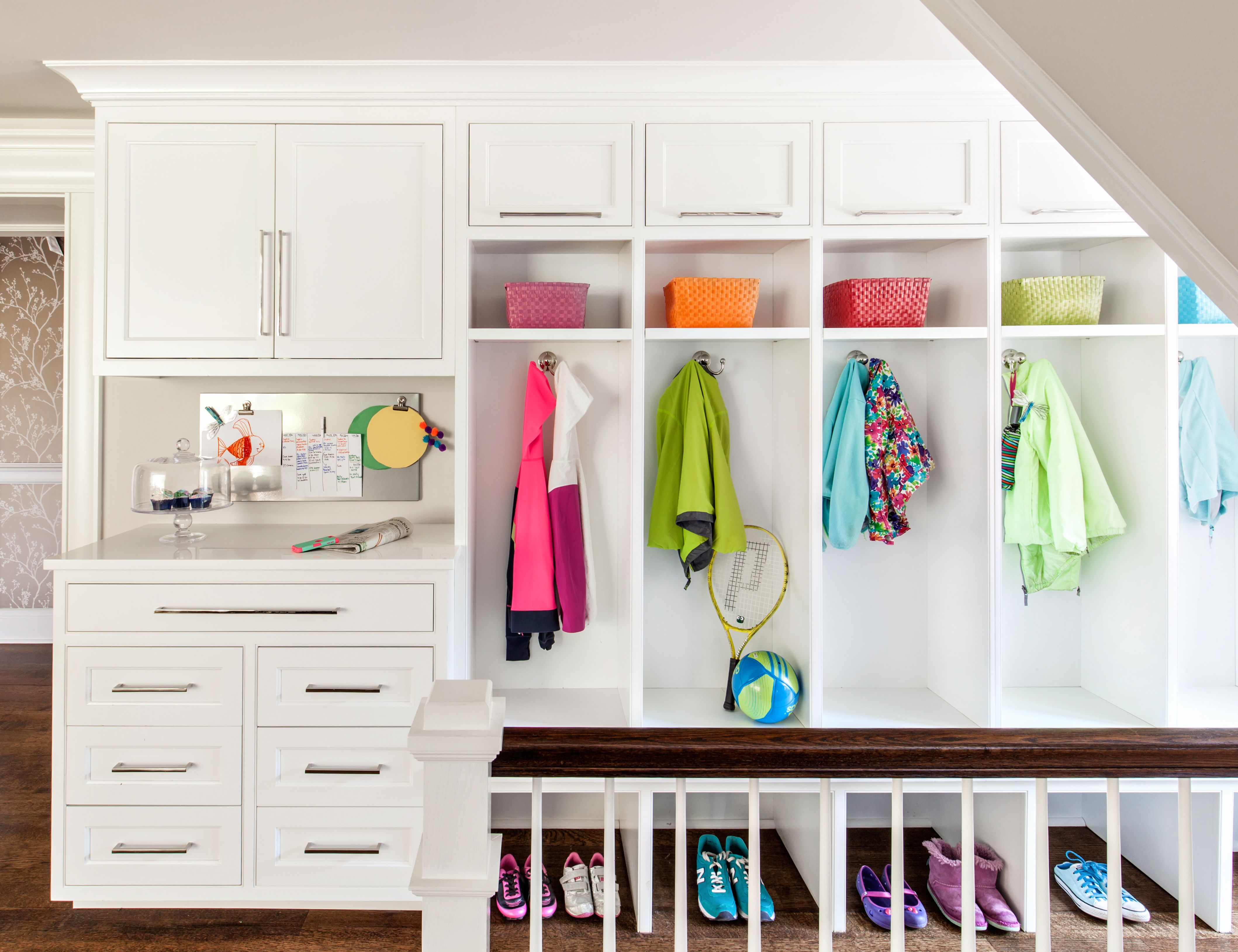
If there is one place in the home where you can get down and dirty, it is a mudroom. After all, the name of the space says it all.
With that said, any homeowner would prefer that their mudroom stay muddled and keep all of their items that otherwise create a mess at bay. Enter designer Claire Paquin of Clean Design Partners. She is a master of mudrooms and is offering up all of her best tips for creating a stylish yet, functional storage haven when designing your own mudroom.
Location, Location, Location
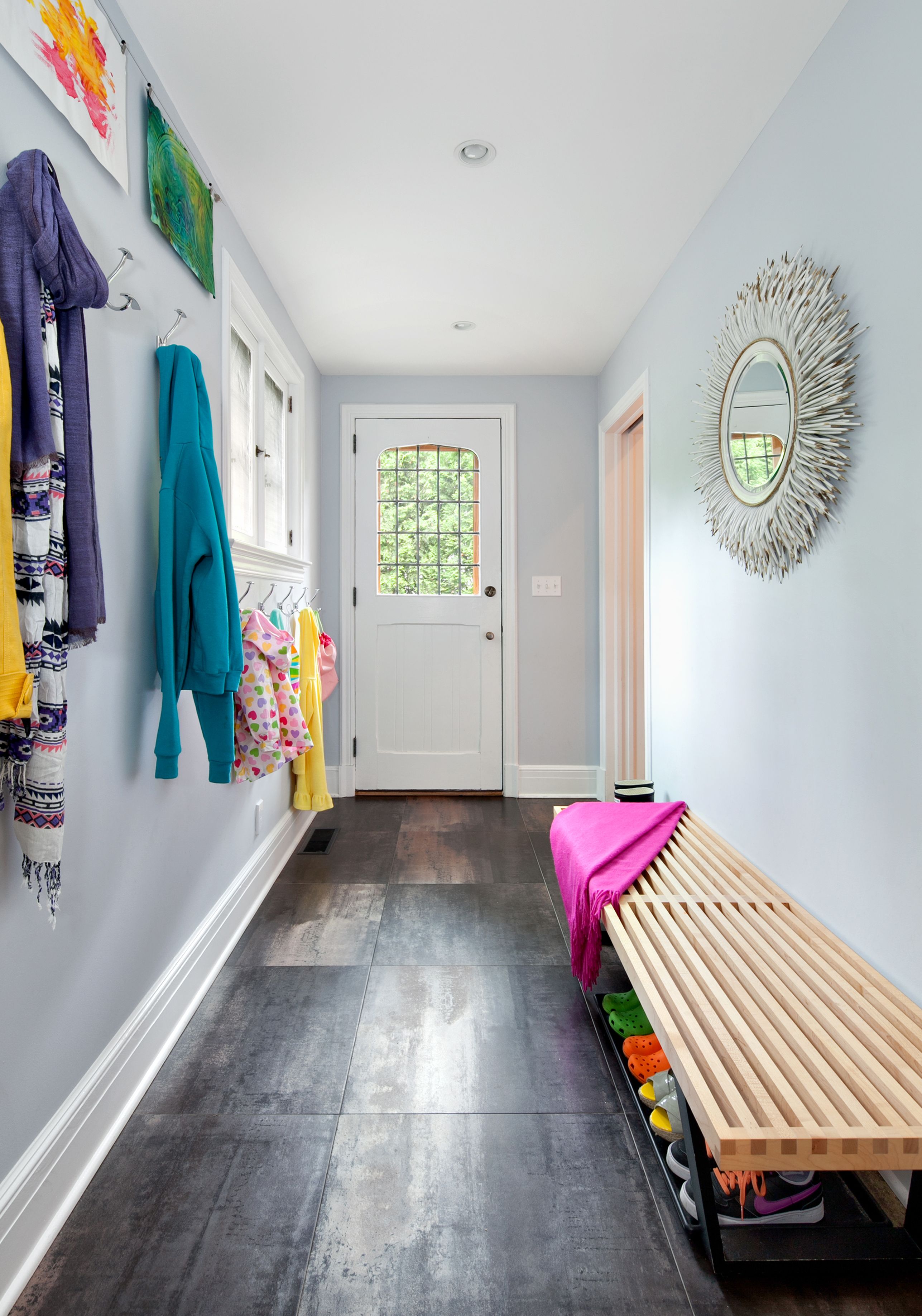
The best place to add a mudroom is right near the door you enter most often. “This could be near the garage, laundry room, or perhaps you carve out a space near your kitchen,” says Claire Paquin. “My favorite place is between the garage and the kitchen. It’s the most convenient for when you leave the house for kids’ activities and for bringing in all the packages and groceries when you return home.”
Storage Solutions
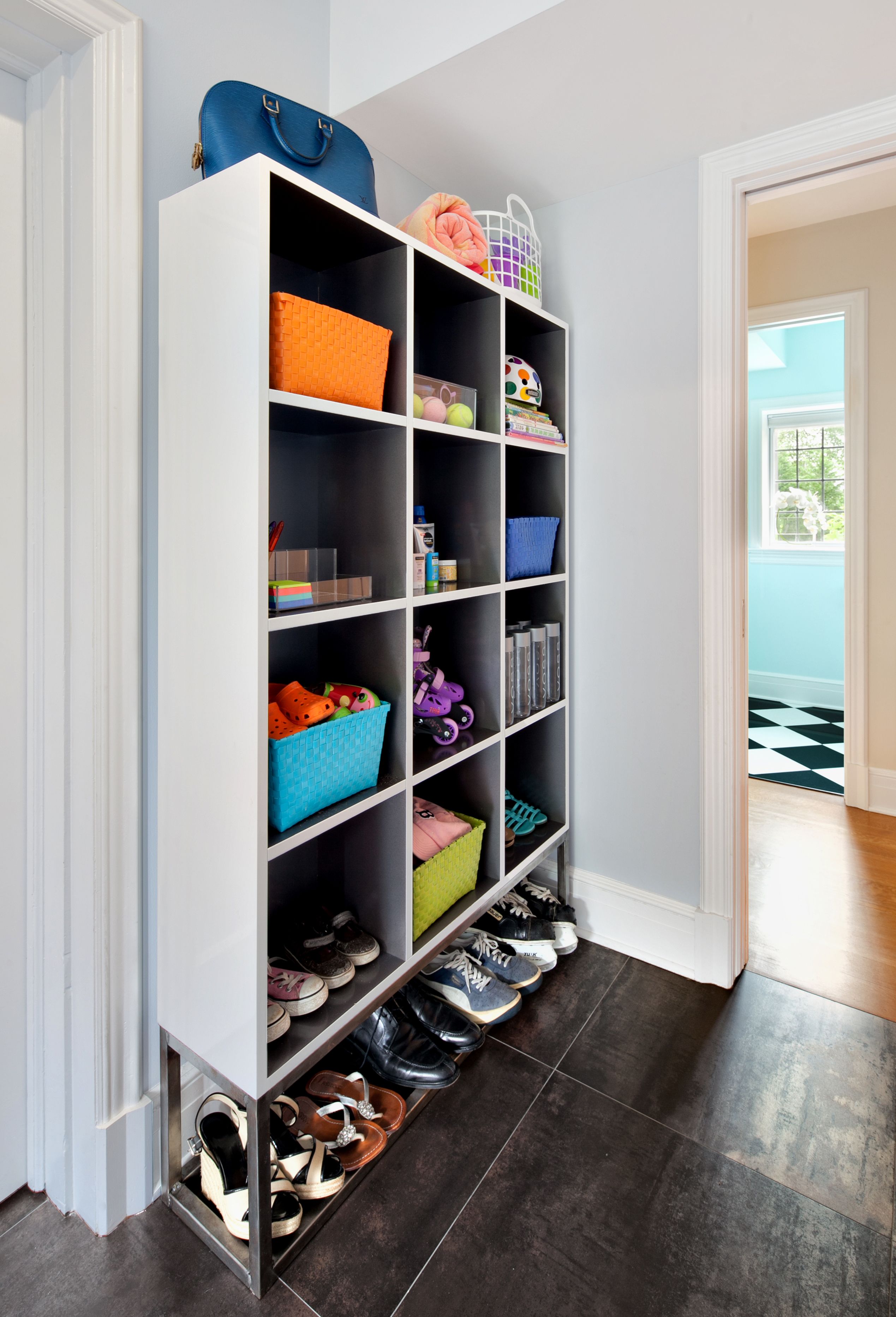
For a mudroom to be successful, storage is key. “My mantra is ‘a place for everything and everything in its place,’” says Paquin. “There’s nothing more maddening than not being able to find the things you need when you’re leaving the house.”
She suggests taking inventory of the items you regularly use when you are headed out the door. Then determine what storage you need for these items so that they are easily accessible.
Also, think about each person in your household and what ways to help them best function when coming into the home and when leaving the home. Once you have all of this, you will need to plan accordingly based on the amount of space you have and your budget.
“The goal is to make a functional and organized space for your family, so getting out the door can be easy and efficient,” says Paquin. “Sometimes the layout of the home or a tight budget can make it trickier to suit all needs, but a little creativity can go a long way towards the goal.”
The Essentials
Paquin suggests using a mix of closed and open storage. “You’ll want designated spots to put your purse and keys, your most frequently used jackets and shoes, and any items for routine activities like a baseball glove and cleats or sunscreen and towels.”
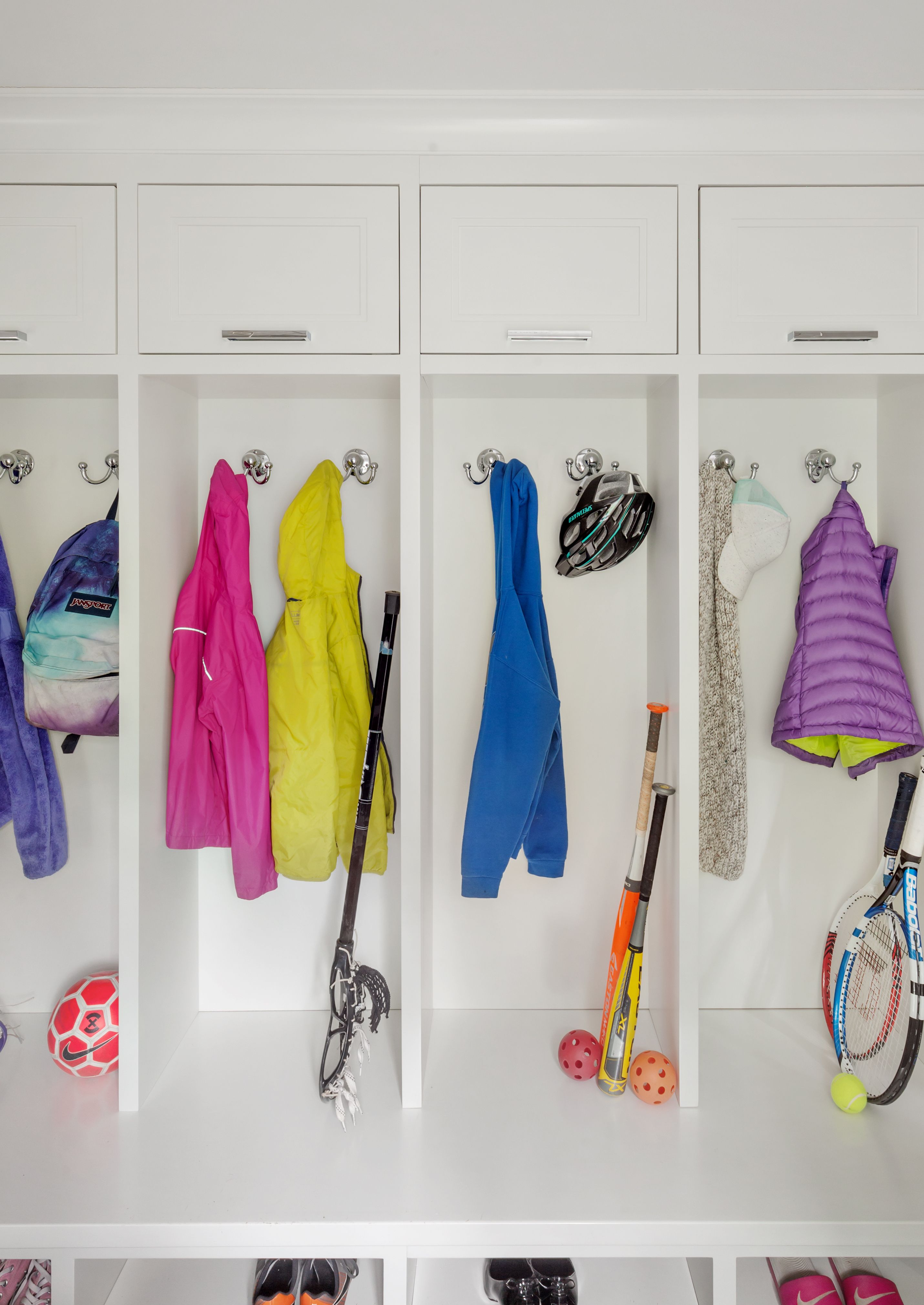
Closed storage is great for those items you don’t often use, like sports equipment and winter boots.
Open cubbies and hooks are useful for everyday things that you grab all the time, like backpacks, jackets, and your most-used shoes.
Baskets on shelves work best for smaller items like hats, gloves, and other accessories while keeping things neat and tidy.
If you have the space, she also recommends adding a bench so that you can sit down while putting on your shoes. She says it’s also a great place to toss items temporarily when you get home before you put everything away.
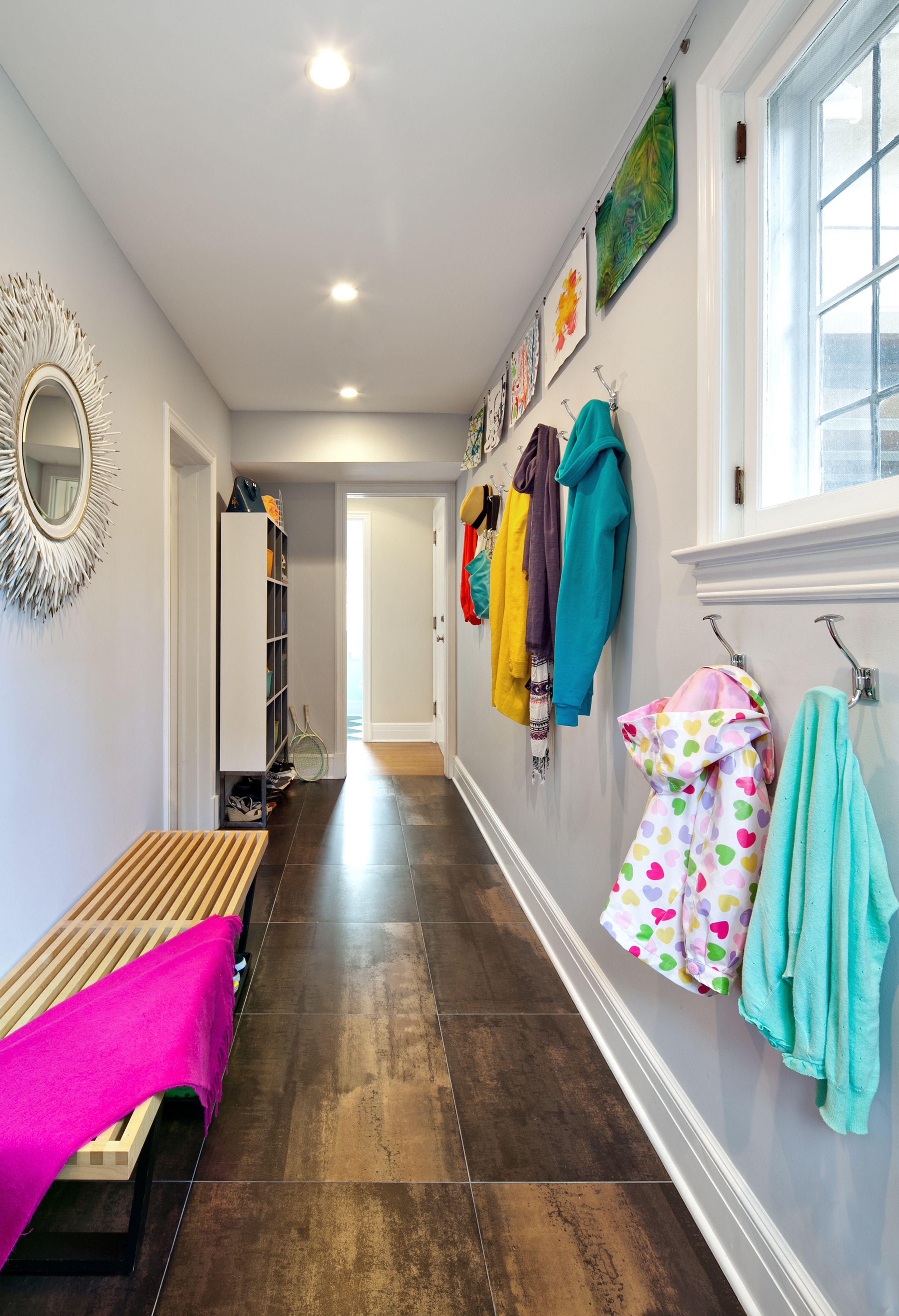
Keep papers and smaller items close at hand with a magnet board. “It’s a great tool for keeping track of schedules, permission slips, and shopping lists,” says Paquin. She suggests using magnetic hooks for keys and masks. “I often wallpaper over a plain magnetic board to give it some personality,” she adds.
Each family member should have their own designated space to help keep clutter at bay and make your mudroom work for you. “If each family member has their own cubby or cabinet, they know exactly where to find and keep their things.”
This allows for a neater mudroom because everyone is responsible for their own spaces.
The Do’s and Don’ts of Mudrooms
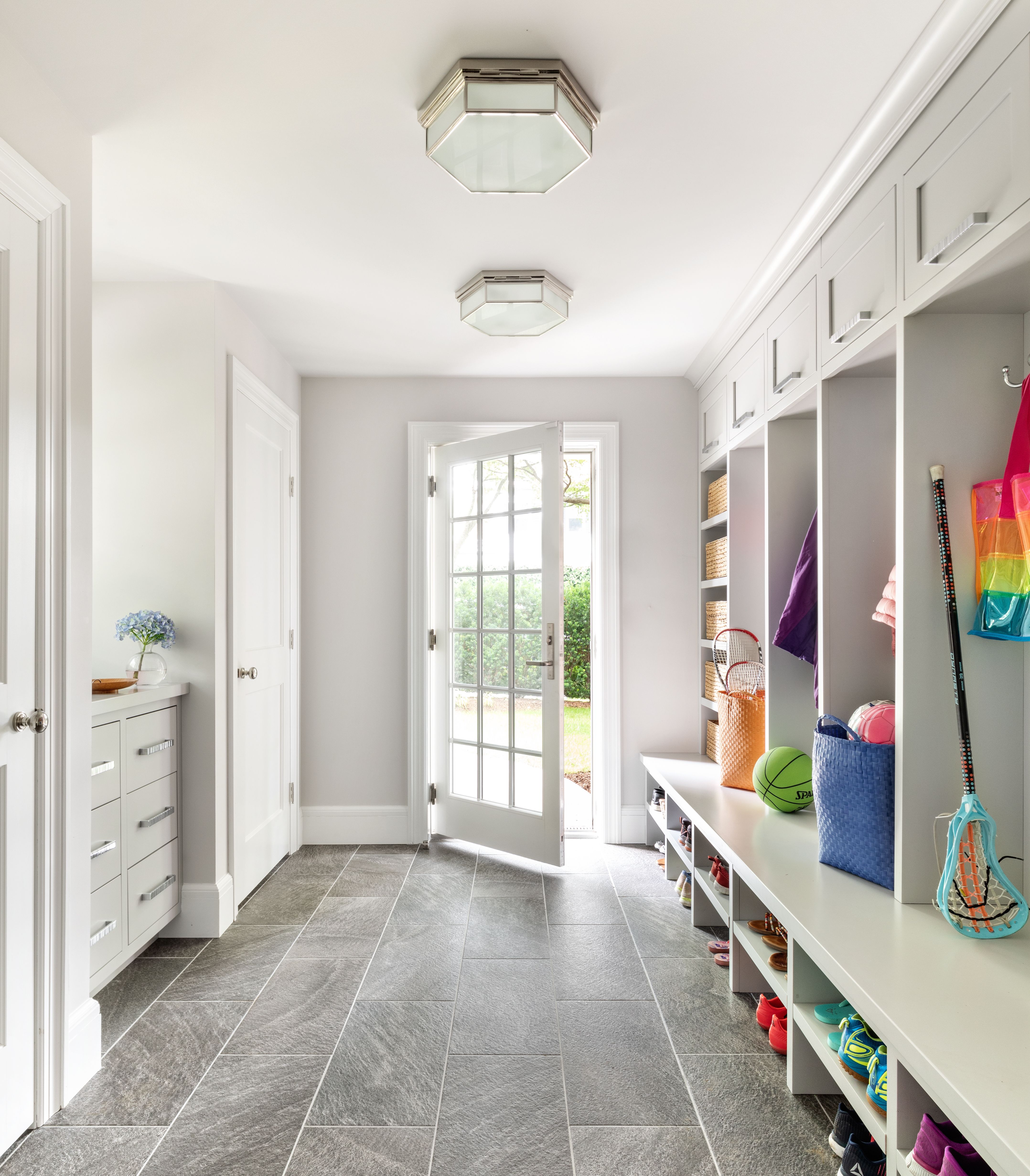
Do have fun with the floor tiles. “I have used everything from large hexagons, chevron patterns, to staggered chevron patterns to large format stacked tiles – almost anything goes in a mudroom!” says Paquin.
Do keep colors neutral and calm. The items that you store and hang in the mudroom will add color and texture.
Do use every inch of vertical space. “Even in 10-foot-high ceilings, I always design right up to the ceiling,” says Paquin. “Hanging keys, bags, and jackets on hooks is an easy way to save space. For any shelving or other methods of storage, think about sizes of the items going in those spaces and how to maximize it.”
Do add the Frame triple pivoting robe hooks from Ginger. It helps you maximize what you can hang if you don’t have a lot of wall space or cubbies.
Don’t use carpet. “You want flooring that can withstand the high traffic and is easy to clean,” says Paquin.
Don’t use delicate finishes. Durable finishes are key because your mudroom will see, well, a lot of mud and wear and tear.
Don’t make design decisions that aren’t authentic to your household. “If seeing jackets and shoes is going to make you anxious, then perhaps it’s best to avoid open cubbies and lean more towards closed storage with cabinet doors and drawers,” says Paquin. “On the other hand, if the items are less likely to be put away when there are drawers or doors to open, you should embrace the open cubbies.”
Jenn Andrlik is a freelance writer and editor who specializes in home design and architecture, and parenting. She is formerly the senior editor of Martha Stewart Living and executive editor of both Westchester Home and Westchester/Hudson Valley Weddings. She has worked for other titles, including House Beautiful and Parents. She has two children and lives with them, her husband, and beagle, Lucky, in East Norwalk, CT.
TELL US WHAT YOU THINK! TAKE OUR BRIEF READER SURVEY NOW
Please help us serve you better by completing this brief, four-minute survey.
We’d love to know your thoughts and opinions on what you like, what you’d like to read more about, and how we can do better.
CLICK HERE to take our survey or visit
www.surveymonkey.com/r/ExaminerPlus
Examiner Media is a proud participant in The Trust Project.
CLICK HERE to review our best practices and editorial policies.
We welcome corrections, story ideas, and general feedback. CLICK HERE to use our actionable feedback form.

Examiner Media – Keeping you informed with professionally-reported local news, features, and sports coverage.



